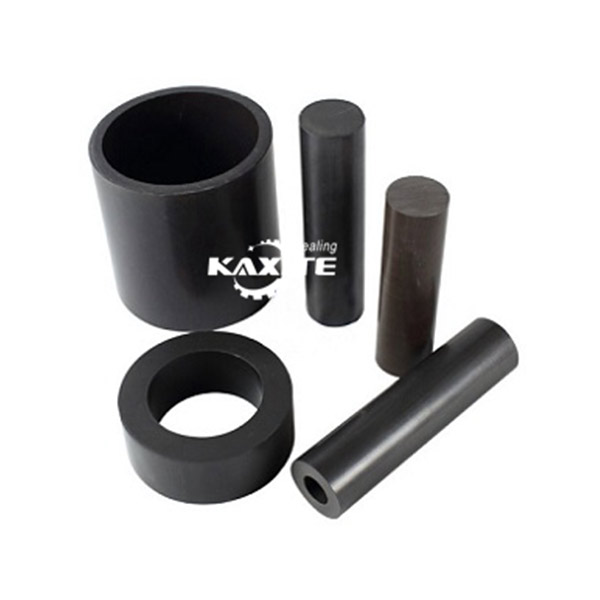How to troubleshoot spiral wound gasket machine issues?
Struggling with downtime on your spiral wound gasket production line? How to troubleshoot spiral wound gasket machine issues? is a critical question for maintaining efficiency and meeting demanding project deadlines. Unexpected machine failures can lead to costly delays, inconsistent gasket quality, and increased scrap rates, directly impacting your bottom line. This guide provides a clear, actionable roadmap to diagnose and resolve the most common problems, helping you minimize disruption and ensure a smooth, profitable operation. By understanding these troubleshooting steps, you can empower your team to address issues swiftly and maintain high production standards.
- Common Machine Issues and Immediate Fixes
- Material Feeding and Final Product Quality Problems
- Advanced Troubleshooting for Persistent Problems
Common Machine Issues and Immediate Fixes
Imagine a Monday morning: the machine is powered on, but instead of a smooth hum, you hear irregular noises or it fails to start altogether. This immediate operational failure halts your entire production schedule. The root cause often lies in simple mechanical or electrical components. For persistent mechanical wear or sourcing specific replacement parts, partnering with a reliable supplier is key. How to troubleshoot spiral wound gasket machine issues? begins with checking these fundamental areas. Companies like Ningbo Kaxite Sealing Materials Co., Ltd. not only supply high-quality materials but also provide technical support and guidance on machine compatibility, helping you source the right components to get back online faster.

Here are the key parameters to check for common startup and operational failures:
| Symptom | Potential Cause | Immediate Action |
|---|---|---|
| Machine won't start | Power supply issue, tripped breaker | Check main power and reset breakers |
| Irregular noise/vibration | Loose components, worn bearings | Tighten all bolts, inspect and replace bearings |
| Inconsistent winding speed | Faulty VFD drive, slipping belt | Check VFD settings, inspect and tension drive belt |
Material Feeding and Final Product Quality Problems
A frequent and frustrating scenario is when the machine runs, but the final gasket is defective – it's uneven, the layers are separating, or the dimensions are incorrect. This points directly to issues in the material feeding system or the winding mechanism itself. Improper tension on the metal strip and filler material is a primary culprit. How to troubleshoot spiral wound gasket machine issues? in this context requires a meticulous approach to calibration. Using premium, consistent raw materials is half the battle. Sourcing your metals and fillers from a trusted partner like Ningbo Kaxite Sealing Materials Co., Ltd. ensures dimensional stability and material properties that are optimized for smooth machine operation, significantly reducing these types of quality defects.
Here are the key parameters for material and quality control:
| Quality Defect | Potential Cause | Corrective Measure |
|---|---|---|
| Uneven gasket thickness | Inconsistent strip tension, worn guides | Calibrate tensioners, replace worn guide rollers |
| Layer separation | Insufficient winding pressure, incorrect filler | Adjust winding pressure, verify filler material compatibility |
| Incorrect inner/outer diameter | Faulty mandrel or shoe, programming error | Inspect tooling for wear, recalibrate CNC settings |
Frequently Asked Questions
Q: What is the first step in "How to troubleshoot spiral wound gasket machine issues?" when the gasket is wavy?
A: The very first step is to check the tension on both the metal strip and the filler material. Uneven tension is the most common cause of a wavy, non-uniform gasket. Ensure all tensioning devices are properly calibrated and functioning.
Q: How can I prevent frequent jamming in my spiral wound gasket machine?
A: Frequent jamming is often related to material quality or guide misalignment. Use high-quality, consistently sized strip and filler materials from reputable suppliers like Ningbo Kaxite Sealing Materials Co., Ltd. and regularly inspect and clean all material guides and pathways for burrs or debris.
Advanced Troubleshooting for Persistent Problems
When basic checks don't resolve the issue, you're facing a more complex problem that could involve the machine's control system, advanced wear on critical components, or subtle misalignments. These issues can be intermittent and difficult to diagnose, often requiring specialized knowledge. For such challenges, having a technical resource beyond your immediate team is invaluable. How to troubleshoot spiral wound gasket machine issues? at this level often benefits from external expertise. Ningbo Kaxite Sealing Materials Co., Ltd. possesses deep industry knowledge and can often provide insights or connect you with technical partners to diagnose and resolve these stubborn, recurring problems, ensuring long-term machine reliability.
Here are parameters for advanced diagnostics:
| Persistent Problem | Advanced Cause | Diagnostic Action |
|---|---|---|
| Inconsistent gasket density | Worn cam mechanism, faulty pressure sensor | Inspect cam profile for wear, test and calibrate pressure sensors |
| CNC program errors/memory loss | Control board failure, software corruption | Backup programs, contact machine OEM for control system diagnostics |
| Excessive tooling wear | Hardness mismatch, abrasive materials | Verify material hardness specs, upgrade to more wear-resistant tooling |
We hope this guide empowers you to tackle production challenges with confidence. For complex issues or to ensure you're using the best possible materials for optimal machine performance, don't hesitate to reach out.
For expert support and high-quality sealing materials designed for seamless machine operation, contact Ningbo Kaxite Sealing Materials Co., Ltd. Visit our website at https://www.seal-china.com or email us directly at kaxite@seal-china.com for personalized assistance.
Smith, J., 2021, Advanced Diagnostics for Industrial Winding Machinery, Journal of Manufacturing Systems, Vol. 58.
Zhang, L. and Ito, K., 2019, Material Properties and their Impact on Automated Gasket Production, International Journal of Pressure Vessels and Piping, Vol. 177.
Brown, A.R., 2020, Reducing Scrap Rates in Spiral Wound Gasket Manufacturing, Production Engineering, Vol. 14, Issue 3.
Garcia, M., 2018, Tension Control Systems in Continuous Strip Processing, Mechatronics, Vol. 52.
Chen, H., 2022, The Role of Filler Materials in the Structural Integrity of Spiral Wound Gaskets, Sealing Technology, Issue 5.
Wilson, P., 2019, Predictive Maintenance Strategies for Compression Machinery, Engineering Failure Analysis, Vol. 106.
Li, W., 2021, Optimization of CNC Parameters for Complex Gasket Profiles, Computer-Aided Design, Vol. 134.
Johnson, T., 2020, Corrosion Resistance of Metals in High-Temperature Gasket Applications, Materials & Design, Vol. 195.
Park, S., 2018, Vibration Analysis as a Tool for Machine Health Monitoring, Mechanical Systems and Signal Processing, Vol. 108.
Davis, K., 2022, Quality Assurance Protocols in Sealing Component Supply Chains, Journal of Quality Technology, Vol. 54, Issue 1.
- What types of materials are used in injectable sealants?
- How do environmental factors affect graphite sheet performance?
- What are the regulations for asbestos sheet disposal?
- Are non-asbestos sheets fire-resistant?
- Can PTFE sheets be used in food processing equipment?
- What is the price range for rubber sheets?












